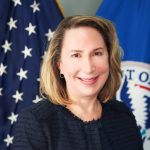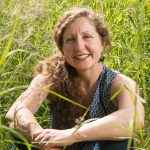Experts claim admin used ‘misinformation’ to justify logging
By Adam Aton, Originally published by E&E News Tuesday, October 22, 2019
The Trump administration says the Tongass National Forest is America’s best carbon warehouse — so it’s fine to increase logging there.
The Forest Service last week released a draft environmental impact statement for building new roads through the Tongass, a precondition for feeding more old-growth trees into southeastern Alaska’s struggling timber mills. Every 21st-century president has fought over whether to expand or curtail logging in the massive forest. Trump has gone the furthest; his Forest Service last week said the time had come for a final resolution and recommended opening almost the entire area to development.
At stake is the country’s largest forest. The Tongass is among the world’s best carbon sinks, and it’s one of the largest unfragmented ecosystems in North America. Its trees hold about 650 million tons of carbon, which roughly converts to half of U.S. carbon dioxide emissions in 2017.
Trump’s draft EIS says the region plays an “important” role in regulating global climate, and changes in its forests can carry “global consequences.” Those are notable statements from an administration that usually frames emissions deregulation and drilling growth as too insignificant to affect world temperatures.
To justify development in such a critical area, the administration turns to an argument that many scientists reject: Any emissions from logging would be “temporary,” as the timber would sequester carbon in building materials while replacement trees recapture even more CO2. The Tongass’ carbon load has stabilized or possibly even increased since logging peaked in the 1970s and ’80s before declining, according to the draft EIS.
“Potential negative effects on the Tongass may be ameliorated and may be completely reversed with time, reducing or eliminating potential negative cumulative effects on carbon and climate,” the document says.
Beverly Law, an Oregon State University professor whose forestry research is cited in the draft EIS, called the administration’s argument “misinformation.”
Some old-growth trees in the Tongass are more than a thousand years old, so it would take a very long time for the forest to regain such a huge amount of carbon, she said.
“We call it slow in, fast out,” she said in an interview, explaining that emissions from milling and transporting the lumber, along with decomposition of the waste wood, outweigh carbon sequestration.
“We’ve tracked this to landfill, and it’s a significant [amount of] emissions,” she said.
About 500,000 acres of old-growth forest — about 9% of all the trees in the Tongass — has been cut down, but only one-quarter of that has happened since 1990. Some of the region’s lumber mills have shuttered amid the slowdown, prompting the state of Alaska to petition the Trump administration to allow more logging of valuable old-growth trees.
The Trump administration’s preferred course of action would make available another 160,000 acres of old growth, while also nixing prohibitions on roads in 9.2 million acres of the Tongass. The Forest Service said that would happen in accordance with guidelines from the United Nations’ climate authority, the Intergovernmental Panel on Climate Change.
“The management mechanisms applied in all alternatives are consistent with internationally recognized climate change adaptation and mitigation practices identified by the IPCC,” the draft EIS says.
That line baffled Dominick DellaSala, president and chief scientist at the Geos Institute.
“I was one of the reviewers of the IPCC report, and I can tell you: Nothing in that report supports what they’re claiming,” said DellaSala, whose research was also cited in the draft EIS.
The draft EIS warns that Alaska could see an additional 1 to 3.5 degrees Celsius of warming by 2050, but it makes little effort to grapple with the implications of such warming.
“There is considerable uncertainty concerning the exact scope of the effects of climate change on the forests of Southeast Alaska and how best to deal with possible changes to the many resources managed on the Tongass,” the document says.
Climate models show Alaska warming faster than the rest of the country — the changes are already visible — but the Tongass is poised to fare better than its surrounding landscapes, DellaSala said. That could make it an oasis for wildlife that feels climate pressures elsewhere. But destroying habitat by logging and fragmenting the remainder with roads undermines that option, he said.
“Alaska’s going to be in big trouble in the coming century, so why give away the one opportunity to protect those forests that are going to help stabilize the climate?” he said.
Article was also republished by Scientific American
Join the Cornerstone Network
Sign up with a monthly donation and become part of our Cornerstone Network. Network members recieve the messages posted here first, delivered directly to your inbox. Your ongoing support is the foundation of our work.

 Samantha Medlock is President of Climate Risk Advisors, helping communities and organizations advance equity, sustainability, and resilience. Her career began chasing floods as a local official in Texas Flash Flood Alley—a hands-on experience that still shapes her approach to climate and disaster risk management.
Samantha Medlock is President of Climate Risk Advisors, helping communities and organizations advance equity, sustainability, and resilience. Her career began chasing floods as a local official in Texas Flash Flood Alley—a hands-on experience that still shapes her approach to climate and disaster risk management.
 Arsum is the Senior Adaptation and Coastal Resilience Specialist for the National Wildlife Federation’s Southcentral Region. In this role, she advances climate adaptation efforts, with a focus on nature-based approaches to address the impacts of climate change and extreme events across the Gulf region. She has authored and co-authored numerous publications on climate impact assessments and adaptation solutions. Additionally, she regularly participates in state-based coastal resilience and hazard mitigation planning across the Gulf, collaborating with regional and local stakeholders.
Arsum is the Senior Adaptation and Coastal Resilience Specialist for the National Wildlife Federation’s Southcentral Region. In this role, she advances climate adaptation efforts, with a focus on nature-based approaches to address the impacts of climate change and extreme events across the Gulf region. She has authored and co-authored numerous publications on climate impact assessments and adaptation solutions. Additionally, she regularly participates in state-based coastal resilience and hazard mitigation planning across the Gulf, collaborating with regional and local stakeholders. Frank is the former President of the Reinsurance Association of America. Frank currently serves on the Advisory Board of the OECD’s International Network for the Financial Management of Large-Scale Disasters, the RAND Center on Catastrophic Risk Management and Compensation, and the University of Cincinnati’s Carl H. Lindner III Center for Insurance and Risk Management Advisory Board.
Frank is the former President of the Reinsurance Association of America. Frank currently serves on the Advisory Board of the OECD’s International Network for the Financial Management of Large-Scale Disasters, the RAND Center on Catastrophic Risk Management and Compensation, and the University of Cincinnati’s Carl H. Lindner III Center for Insurance and Risk Management Advisory Board. Jim is a multilingual world traveler. Based in Bavaria during the 1970s, Jim spent most of this period in India, Afghanistan and Nepal, where he founded and operated a charitable medical clinic serving Tibetan Refugees. He settled in Oregon in 1983 on a forested ranch in the Umpqua National Forest.
Jim is a multilingual world traveler. Based in Bavaria during the 1970s, Jim spent most of this period in India, Afghanistan and Nepal, where he founded and operated a charitable medical clinic serving Tibetan Refugees. He settled in Oregon in 1983 on a forested ranch in the Umpqua National Forest. Dr. Micah Hahn is an Associate Professor of Environmental Health in the Institute for Circumpolar Health Studies at the University of Alaska-Anchorage. She received her joint PhD in Epidemiology / Environment and Resources from the University of Wisconsin-Madison and her MPH in Global Environmental Health from Emory University. Subsequently, she was a postdoctoral fellow for the CDC Climate and Health Program, and in this position worked collaboratively with the CDC Division of Vector-borne Diseases and the National Center for Atmospheric Research. Her research focuses on understanding the health impacts of climate change and working with communities to develop locally-relevant adaptation and resilience-building strategies. Dr. Hahn is also on the Management Team of the Alaska Climate Adaptation Science Center.
Dr. Micah Hahn is an Associate Professor of Environmental Health in the Institute for Circumpolar Health Studies at the University of Alaska-Anchorage. She received her joint PhD in Epidemiology / Environment and Resources from the University of Wisconsin-Madison and her MPH in Global Environmental Health from Emory University. Subsequently, she was a postdoctoral fellow for the CDC Climate and Health Program, and in this position worked collaboratively with the CDC Division of Vector-borne Diseases and the National Center for Atmospheric Research. Her research focuses on understanding the health impacts of climate change and working with communities to develop locally-relevant adaptation and resilience-building strategies. Dr. Hahn is also on the Management Team of the Alaska Climate Adaptation Science Center. Michael is a former Founding Principal of Resilient Cities Catalyst, a global non-profit helping cities and their partners tackle their toughest challenges. He is currently the Executive Director of Climate Resilience Academy at the University of Miami.
Michael is a former Founding Principal of Resilient Cities Catalyst, a global non-profit helping cities and their partners tackle their toughest challenges. He is currently the Executive Director of Climate Resilience Academy at the University of Miami. Dr. Quintus Jett is a consultant, educator, and strategist for public causes. He has a doctorate in Organizations & Management from Stanford University, and a two-decade faculty career which spans schools, departments, and programs of business, engineering, liberal studies, divinity, and public and nonprofit management. Following Hurricane Katrina in 2005, Dr. Jett launched a volunteer project in New Orleans, which enlisted residents, students from over a dozen colleges and universities, and hundreds of others to field map the city’s Gentilly district, Lower Ninth Ward, and New Orleans East. Dr. Jett is an innovator in higher education, bridging the divide between academic research and the other priorities of the modern university, including student access and diversity, community engagement, and providing foundations for life-long learning in today’s rapidly changing world.
Dr. Quintus Jett is a consultant, educator, and strategist for public causes. He has a doctorate in Organizations & Management from Stanford University, and a two-decade faculty career which spans schools, departments, and programs of business, engineering, liberal studies, divinity, and public and nonprofit management. Following Hurricane Katrina in 2005, Dr. Jett launched a volunteer project in New Orleans, which enlisted residents, students from over a dozen colleges and universities, and hundreds of others to field map the city’s Gentilly district, Lower Ninth Ward, and New Orleans East. Dr. Jett is an innovator in higher education, bridging the divide between academic research and the other priorities of the modern university, including student access and diversity, community engagement, and providing foundations for life-long learning in today’s rapidly changing world. Scott is Monfort Professor of Atmospheric Science at Colorado State University. He has written about 100 publications in the peer-reviewed climate literature, is a former editor of the Journal of Climate, and served for five years as founding Science Chair of the North American Carbon Program.
Scott is Monfort Professor of Atmospheric Science at Colorado State University. He has written about 100 publications in the peer-reviewed climate literature, is a former editor of the Journal of Climate, and served for five years as founding Science Chair of the North American Carbon Program. Linda has many years of experience in disaster preparedness and resilience. She has been an elected official on the Linn County Iowa Board of Supervisors, Chair of the Metropolitan Planning Organization, the East Central Iowa Council of Governments, the statewide Mental Health Developmental Disability and the Linn County Board of Health. Langston is a former president of the National Association of Counties (2013-2014).
Linda has many years of experience in disaster preparedness and resilience. She has been an elected official on the Linn County Iowa Board of Supervisors, Chair of the Metropolitan Planning Organization, the East Central Iowa Council of Governments, the statewide Mental Health Developmental Disability and the Linn County Board of Health. Langston is a former president of the National Association of Counties (2013-2014). Ken works with families and organizations as a mediator, organizational consultant, trainer and facilitator. Along with his passion for helping people prepare for and reduce climate change, Ken also volunteers as a mediator through Mediation Works and is passionate about supporting youth through mentoring with Boys to Men of Southern Oregon.
Ken works with families and organizations as a mediator, organizational consultant, trainer and facilitator. Along with his passion for helping people prepare for and reduce climate change, Ken also volunteers as a mediator through Mediation Works and is passionate about supporting youth through mentoring with Boys to Men of Southern Oregon. Matthew is a retired high school teacher who was once honored as Oregon High School Social Studies Teacher of the Year. Before his teaching career he was in the restaurant business in Portland. He is also a lawyer who has been a member of the Oregon State Bar Association since 1980.
Matthew is a retired high school teacher who was once honored as Oregon High School Social Studies Teacher of the Year. Before his teaching career he was in the restaurant business in Portland. He is also a lawyer who has been a member of the Oregon State Bar Association since 1980. Andrea is the Resilience Policy Advisor for the North Carolina Office of Recovery and Resiliency. She works across state agencies and with local governments to increase the state’s resilience to the impacts of climate change.
Andrea is the Resilience Policy Advisor for the North Carolina Office of Recovery and Resiliency. She works across state agencies and with local governments to increase the state’s resilience to the impacts of climate change.